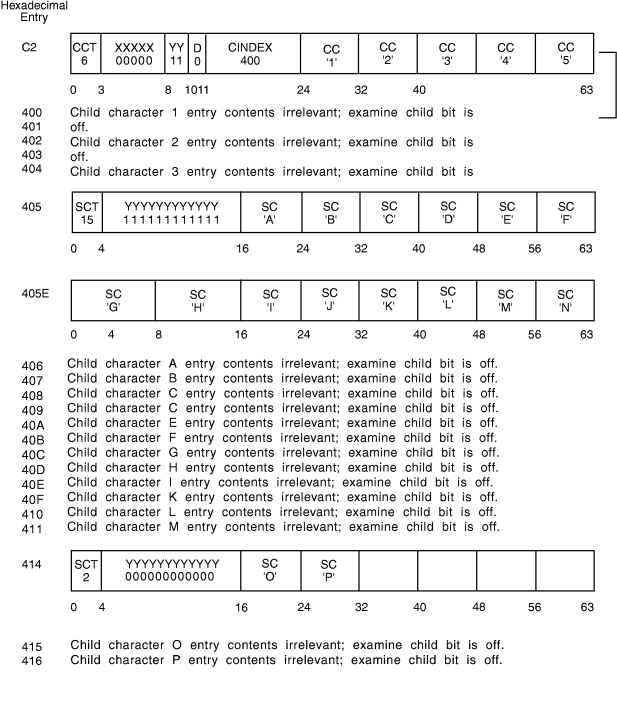Suppose the dictionary looks like the following: 
- Hexadecimal Entry
- Description
- C2
- Alphabet entry for character B; child count of 6 (indicating 5 children plus a sibling descriptor); first child index is X'400', children are 1, 2, 3, 4, and 5.
- 400
- Entry for character 1; no additional extension characters; no children.
- 401-404
- Entries for characters 2 through 5; no additional extension characters; no children.
- 405
- Sibling descriptor; child count of 15, which indicates 14 children plus another sibling descriptor; sibling characters A, B, C, D, E, and F.
- 405
- Sibling descriptor extension. In the expansion dictionary entry X'405', the sibling characters are G, H, I, J, K, L, M, and N.
- 406
- Entry for character A; no additional extension characters; no children.
- 407-413
- Entries for characters B through N; no additional extension characters; no children.
- 414
- Next sibling descriptor; child count of 2; child characters O and P.
- 415
- Entry for character O; no additional extension characters; no children.
- 416
- Entry for character P; no additional extension characters; no children.

The set of input strings longer than one character compressed by
this dictionary are:
- Hexadecimal Symbol
- String
- 400-404
- B1, B2, B3, B4, B5
- 406-40B
- BA, BB, BC, BD, BE, BF
- 40C-413
- BG, BH, BI, BJ, BK, BL, BM, BN
- 415-416
- BO, BP
There are no compression symbols for 405 and 414. These are the sibling descriptor entries. Because their sibling descriptor extensions are located at those indices in the expansion dictionary (not the preceded or unpreceded entries required for expansion), it is important that no compression symbol have that value.